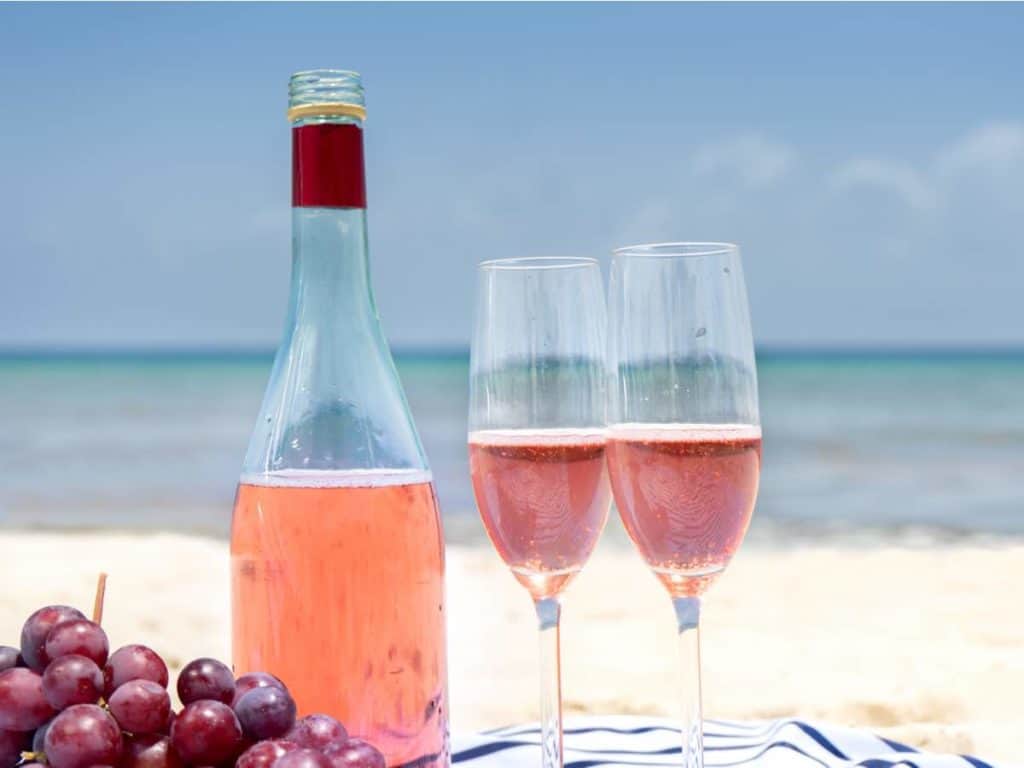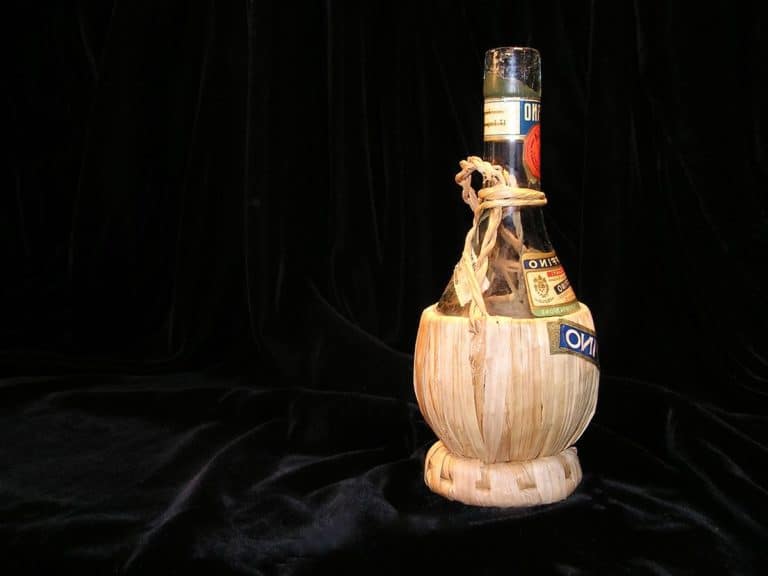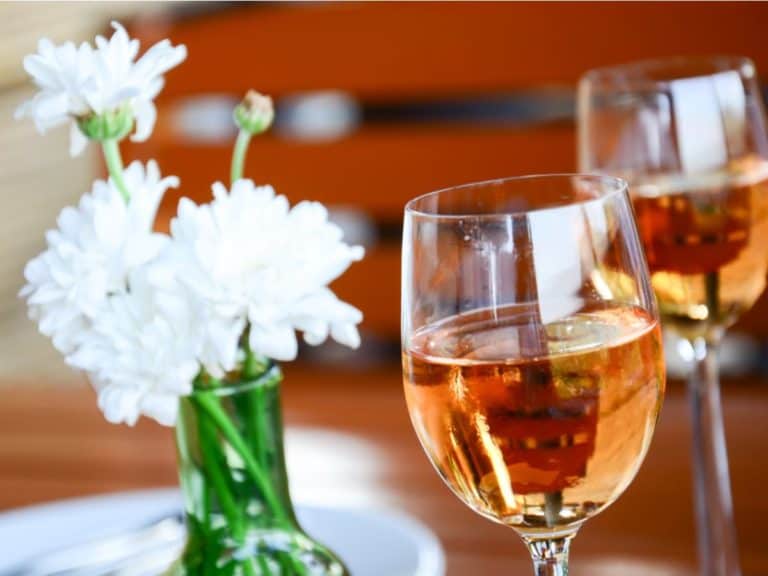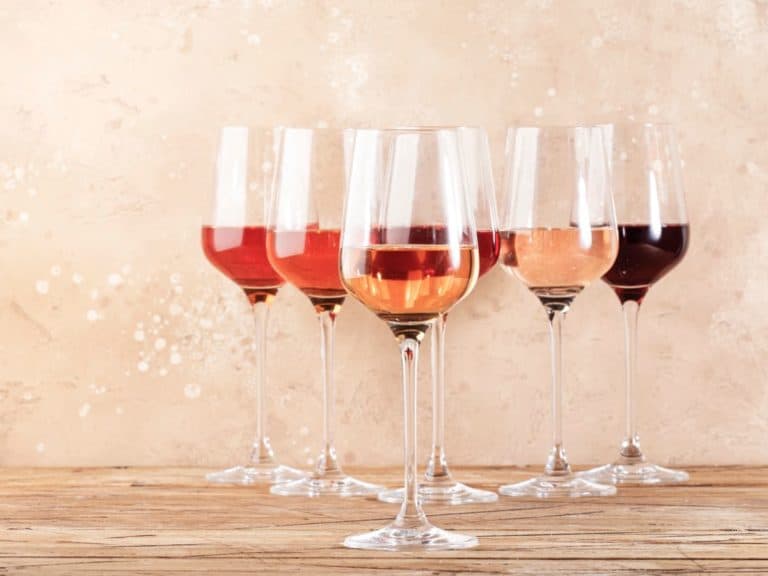10 Good Blush Wines for Every Occasion
With more than 10,000 grape wine varieties in the world, finding the perfect one that treats your taste buds just right can be like finding a needle in a haystack.
Leaving behind the conventional red and white vines, rose wines and their varieties are also slowly gaining popularity. One such wine is the ‘blush wine.’ Popularized by influencers for its distinct pink color, it is an all-time favorite when we talk about summer wine purchases.
Does it live up to the hype, though? Short answer: Yes!
For more details, join us on our quest as we share some of the best-selling blush wines that you can get your hands on.
10 Best Blush Wines: At a Glance
| Triennes Rose | Check it out here |
| Billecart-Salmon Brut Rosé | Check it out here |
| Patrick Bottex Bugey-Cerdon La Cueille | Check it out here |
| Macari Rosé | Check it out here |
| Moulin de Gassac Guilhem Rosé | Check it out here |
| Pratsch Rose | Check it out here |
| Mas de Gourgonnier Les Baux de Provence Rosé | Check it out here |
| Scribe Rosé of Pinot Noir | Check it out here |
| Domaine Tempier Bandol Rosé | Check it out here |
| Rosé Imperial Champagne | Check it out here |
Triennes Rose
An excellent value for money, this version of French blush wine is a steal. Aubert de Villaine (of Domaine de la Romanée-Conti) and Jeremy Seysses (of Domaine Dujac) have joined forces to form Triennes, a winery in Provence. Strawberry’s acidity, citrus zest, and sea spray dominate this organic rosé’s flavors.
Billecart-Salmon Brut Rosé
Billecart-original Salmon’s cuvée is a favorite among wine connoisseurs and industry insiders alike, and it’s easy to see why. Using Chardonnay, Pinot Noir, and Pinot Meunier as the primary grapes, this wine adds a delicious flavor to date nights and takes them to a whole new level.

This drink reigns supreme in the sparkling pink category—the wine’s vibrant and dynamic palate bursts with notes of raspberries, bitter lemon, and brioche. Sushi, salmon, fresh strawberries, and cream are good pairings for this wine.
Patrick Bottex Bugey-Cerdon La Cueille
This bottle combines the best of both worlds. It has a slight touch of sweetness (somewhat similar to sparkling) and is also healthy. Much like Champagne, La Cueille is made using the traditional method. This means that this bottle undergoes just one cycle of fermentation.
Sweet notes of pink grapefruit, raspberry jam, and wild forest berries are the signature hues of this wine. A healthy dose of natural acidity cuts through the residual sweetness to leave you wanting more. Serving suggestions include handmade pies and tartlets.
Macari Rosé
This drink comes from New York and is made using a blend of Malbec and Merlot. Having a dry taste, the Macari Rose has sharp flavors of grapefruit, blood orange, watermelon, and crushed rocks.
These ingredients give it a refreshing element that will go with a wide variety of Greek salads, pizzas, and seafood.
Moulin de Gassac Guilhem Rosé
is one of the best budget options that does not compromise the quality for price cutting. The wine’s easy-to-drink palate is dominated by sour raspberries, peach peel, and wildflowers.
This organic rosé is made from syrah, cinsault, and carignan, all hand-pressed. Be sure to take it with you on your next weekend retreat.
Pratsch Rose
This organic blush, made from Zweigelt, is effervescent, has a little spritz, and is utterly delicious. This wine is all prominent in white peach, pear peel, red currants, and minerals. Grilled white fish, vegetable skewers, or raw bar favorites are some items that can be served with this drink.
Mas de Gourgonnier Les Baux de Provence Rosé
You can’t have blush wine without the name Provence. This organic rosé is made mainly from cabernet sauvignon, limestone-rooted Grenache, and Mourvedre.
It is squeezed directly from the grapes, fermented with yeast, and aged in stainless steel. Pomegranate, cherry, orange peel, and lavender flavors abound in this wine’s lively and zesty flavor profile. You can snack on salad niçoise and soft cheeses while enjoying this wine.
Scribe Rosé of Pinot Noir
This watermelon, lemon zest, red apple peel, and sea salt-infused monovarietal wine comes from the heart of California’s Sonoma Coast.
Blush wines from pinot noir are structured, flavorful, and exceedingly flexible on the table like their red cousins. With an acidic slur, this is a strong beverage that will leave a zesty taste behind.
Domaine Tempier Bandol Rosé
This aged blush wine is one of the best in its segment. It is loaded with flavors coming from berries, peach, and saline. It has the acidity of citrus drinks and the thick structure of sophisticated drinks. This wine can last for years and still taste just as good.
Rosé Imperial Champagne
Last, but not least, this option offers the classic light-pink color blended with a fruity taste. Try it once on any occasion, and you will see your friends pleased with its light yet nutty taste.
How is Blush Wine Prepared?
While some winemakers simply blend pink and white wines to give this drink its signature blue color, this is not the ideal way it should be prepared. In fact, this is even forbidden in most of the EU. The right approach is more like the traditional one. Here is a short overview:
- We first start with picking the right kind of grapes. Most blush wines are prepared using black grapes which are grown organically in local vineyards.
- These grapes are then hand/feet crushed to make a juice (the good ol’ way). This is known as ‘grape stomping/foot trodding.’ Some modern manufacturers even use machines for this purpose.
- The resulting juice is then kept in a fermentation tank, where it is converted into alcohol. After this, we add some yeast which decomposes the fruit sugar into carbon dioxide and alcohol. One key difference here is unlike red wine, which is fermented at a higher temperature, blush wine is kept in colder surroundings.
- We then remove any remaining skins from the liquid after it has stayed in contact with it long enough to retain purple color. The longer the wine will be in contact with grape skin, the more prominent its pink color will be.
- This delicious drink is then bottled and sent out for everyone to enjoy.

Reasons to Drinks Blush Wine
You might have heard the saying: ‘A little bit of alcohol, does you good.’ This especially holds in our case. Here are some of the benefits that might convince you into trying blush wine:
- Improved cardiovascular performance: Since blush wine contains plenty of antioxidants and polyphenols, it helps in the reduction of bad cholesterol and also keeps the heart healthy. What’s better than a summertime beverage that can keep the heart happy and pumping!
- Extremely diet-friendly: Unlike rose and white vine, this drink is significantly low on alcohol content. If you are worried about heart diseases and stroke, then you’ll be much better with a mild beverage.
- Low-calorie delicacy: Expanding further on the ‘diet-friendly’ quo, this wine is also known to be low on calories. A single serving contains just above 80 calories which are enough to soothe your craving and regulated enough for easy-gainers.
- Presence of resveratrol: Blush wine contains more resveratrol than white wine. This compound has been proven to have anti-aging benefits, risk of heart disease, and also reduces inflammation.
Blush Vs. Rose: Myths Busted
‘Every rose wine is a blush wine, but not every blush wine is a rose.’
When growing through the web, you will find plenty of publications that will interchangeably use the terms blush wine and rose wine, giving the notion that both are the same. Is it the case, though? No, certainly not.
- Rose wines street towards a drier taste which gels well with neutral palettes, whereas blush wines have a fruity and sweet taste. Another point to note here is the method of preparation.
- As mentioned earlier, the longer the wine stays in touch with the grape skins, its color will be stronger. Blush wines, a juicy derivative of dark-skinned grapes, are left with grape skins for a while longer as compared to rose wines.
- Their origins are also different. Rose wines are the oldest varieties of wines ever produced. It dates back to ancient Romans and Greeks. On the flipside, blush wine was only recently invented in the late 1970s.
- Lastly, while most blush wines feature a peachy pink or faded color, rose wine, on the other hand, comes in all sorts of colors ranging from pink to dark ruby.
Consumption Guidelines
Be it wine or fruit juice, regulation is key if you want to truly reap the benefits. Given the low-calorie count of blush wine, it is safe to say that you can consume 1-2 glasses a day without worrying about anything.
However, since it is an acidic drink, it is advised that you avoid consuming it on an empty stomach. People who are allergic to sulfites should also avoid blush wines.
What to Pair it With?
It works great with dishes that have cheese, red sauce, and spices. Some frequently served combinations are:
- White pizza
- Soups
- Italian cuisine
- Salads
- Grilled food
- Chicken
How Much is Too Much?
Given all the benefits of blush wine, it is easy to get accustomed to drinking it on a day-to-day basis. However, experts suggest if you want to avoid getting tipsy, limiting the consumption to about four glasses maximum might be the ideal point.
For women, this number falls to 3 glasses per day. Common consequences of drinking too much wine include:
- Hangovers
- Vomiting
- Blackouts
- Irritated mood
- High blood pressure
- Anxiety
Is Blush Wine Harmful?
Antioxidants found in wines are quite beneficial even in the long term. They keep the risk of heart and coronary diseases low and also promote overall better brain functioning.
Even so, there are some studies out there that suggest long-term usage can lead to liver problems, pancreas infection, and even cancer. It is crucial to know that this is only true if you overdose on it for an extended period.
Hope you liked our round-up of the best blush wines. Thanks for keeping up!





